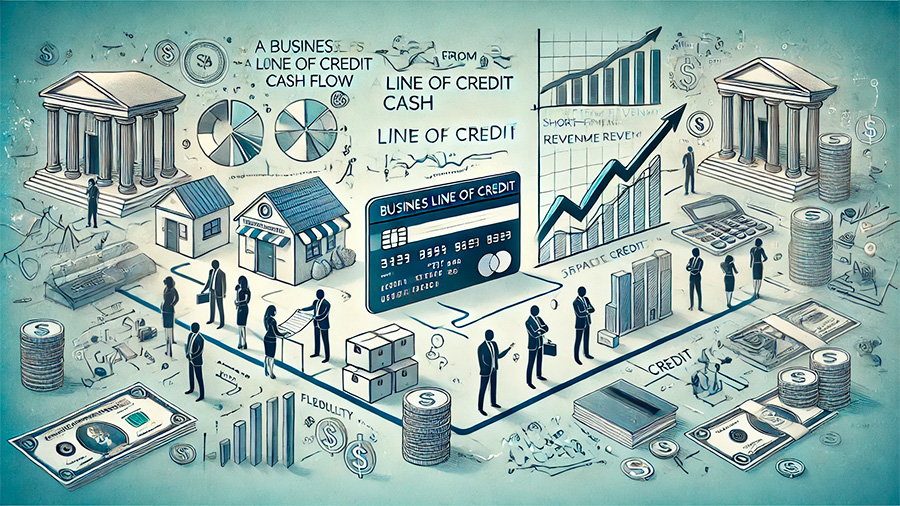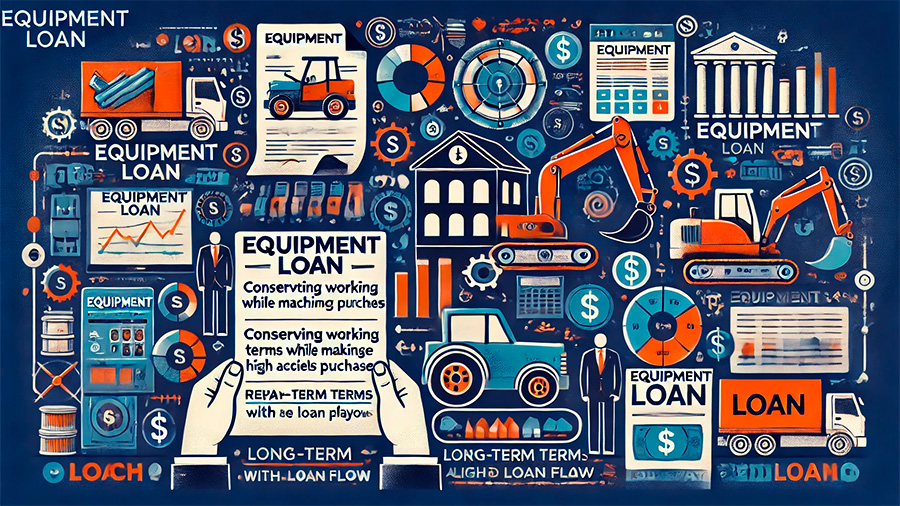Small and medium enterprises (SMEs) are essential contributors to economic growth, but one of the biggest challenges they face is accessing the capital needed to expand and thrive. Whether it’s for daily operations, scaling a business, or funding a new project, securing the right loan can make a significant difference in a company’s ability to achieve its goals. With various loan options available, SMEs must understand the benefits and terms of each to choose the one that best aligns with their financial needs.
Loans provide the necessary capital for purchasing inventory, investing in new technology, expanding operations, or maintaining steady cash flow during periods of slower revenue. For SMEs, these financial tools offer the flexibility and support needed to manage day-to-day expenses while pursuing long-term growth. However, with multiple loan types available, it’s crucial to evaluate which options best suit the specific goals and circumstances of each business.
Term Loans for Long-Term Investments
A term loan is one of the most common types of loans available to SMEs. It provides a lump sum of capital that is repaid over a fixed period with interest. Term loans are ideal for businesses looking to make significant long-term investments, such as purchasing new equipment, expanding into a new market, or financing real estate. They are often used for specific projects that require a large upfront investment, with the expectation that these investments will generate revenue over time to cover the loan repayment.
Term loans come with a set repayment schedule, which offers predictability and stability for financial planning. Interest rates can be fixed or variable, and the loan can have terms ranging from a few years to several decades, depending on the lender and the amount borrowed. This makes term loans suitable for SMEs with clear long-term goals and the ability to repay the loan through steady revenue growth.

Business Lines of Credit for Flexible Cash Flow
A business line of credit offers SMEs flexible access to capital that they can draw from as needed, similar to how a credit card works. Rather than receiving a lump sum upfront, businesses can borrow up to a predetermined limit and repay the borrowed amount over time. Once repaid, the funds become available to borrow again, making a line of credit a highly flexible option for managing cash flow.
This type of loan is particularly useful for SMEs that experience seasonal fluctuations in revenue or need to cover short-term expenses like payroll or inventory purchases. The major benefit of a line of credit is that you only pay interest on the amount borrowed, not the full credit limit, which can help manage costs more effectively.
For many SMEs, a line of credit serves as a financial safety net, providing quick access to funds in case of unexpected expenses or slow revenue periods. It can be an excellent tool for maintaining business stability and ensuring that short-term financial needs don’t interfere with long-term goals.
SBA Loans for Small Business Support
Loans backed by the U.S. Small Business Administration (SBA) are among the most popular financing options for small and medium-sized businesses. SBA loans offer favorable terms, including lower interest rates and longer repayment periods, making them particularly attractive to SMEs. The SBA guarantees a portion of the loan, reducing the risk for lenders and making it easier for businesses to qualify, even if they don’t have a long credit history or significant collateral.
There are several types of SBA loans, including the SBA 7(a) loan, which is designed for general business purposes such as purchasing equipment, refinancing debt, or expanding operations. Another option is the SBA 504 loan, which is used specifically for purchasing fixed assets like real estate or machinery. The SBA also offers microloans for smaller loan amounts, ideal for startups or businesses that need less capital.
SBA loans are highly sought after because they offer some of the most favorable terms for SMEs, but the application process can be more complex and time-consuming compared to other loan types. However, for businesses that qualify, the benefits can be substantial, including lower monthly payments and reduced overall borrowing costs.

Equipment Loans for Purchasing Assets
For SMEs that need to purchase specific equipment to grow their operations, an equipment loan is an ideal solution. These loans are used exclusively to finance the purchase of machinery, vehicles, technology, or other equipment essential to running the business. The equipment itself often serves as collateral for the loan, which can reduce the need for additional assets to secure the loan.
Equipment loans are particularly advantageous because they allow businesses to acquire high-cost assets without draining their working capital. This type of loan ensures that businesses can continue to operate efficiently while making the necessary investments in new technology or machinery.
Unlike other loans that may cover a variety of business expenses, equipment loans are purpose-specific and are often structured with terms that match the expected lifespan of the purchased asset. This means the repayment period typically aligns with the useful life of the equipment, making it easier to balance the cost of the loan with the benefits of the asset.
Short-Term Loans for Immediate Needs
Short-term loans provide quick access to smaller amounts of capital that are typically repaid within a year or less. These loans are ideal for businesses that need to address immediate financial needs, such as covering operational expenses, managing short-term cash flow gaps, or taking advantage of time-sensitive opportunities.
One of the key advantages of short-term loans is their quick approval process, which allows businesses to secure funding in a matter of days. However, they often come with higher interest rates and shorter repayment periods compared to long-term loans. For SMEs, short-term loans are best used for temporary financial needs rather than long-term investments.
Choosing the Right Loan for Your Business
Selecting the right loan for your SME depends on several factors, including the amount of capital needed, the purpose of the loan, the repayment terms, and the financial health of your business. For long-term investments, such as purchasing property or expanding operations, a term loan or SBA loan may be the best option. On the other hand, if you need flexible funding to manage cash flow, a business line of credit can provide the flexibility and access to capital you need.
It’s important to assess your business’s cash flow, revenue projections, and overall financial position before committing to a loan. Each type of loan comes with its own set of requirements, interest rates, and repayment schedules, so understanding how these factors align with your business goals is critical to choosing the right loan.
Conclusion
For small and medium enterprises, access to the right type of loan can be the key to unlocking growth and sustaining long-term success. By understanding the various loan options available—whether it’s a term loan for expansion, a line of credit for flexibility, or an SBA loan for favorable terms—SMEs can make informed decisions that support their financial goals. Careful planning and strategic borrowing ensure that your business can thrive, no matter the challenges ahead.



